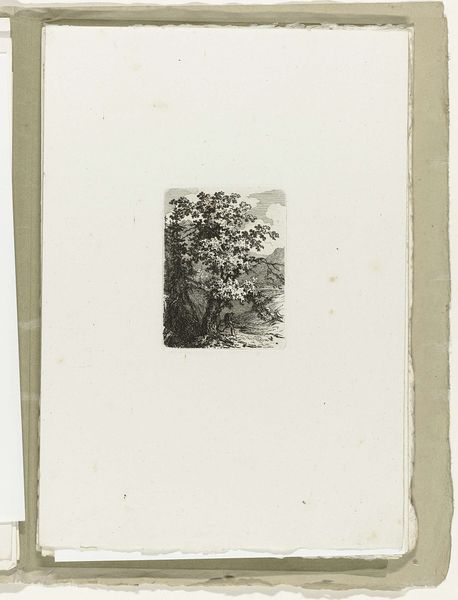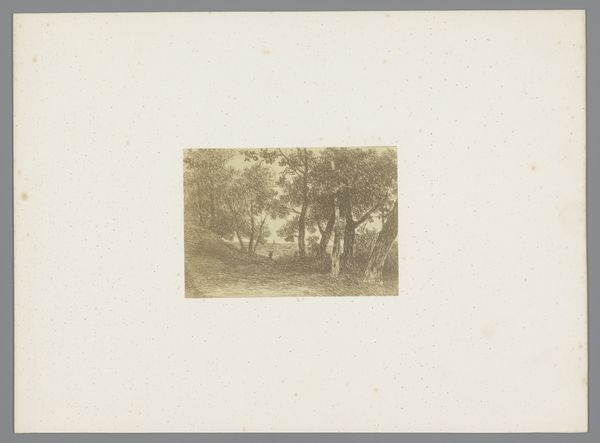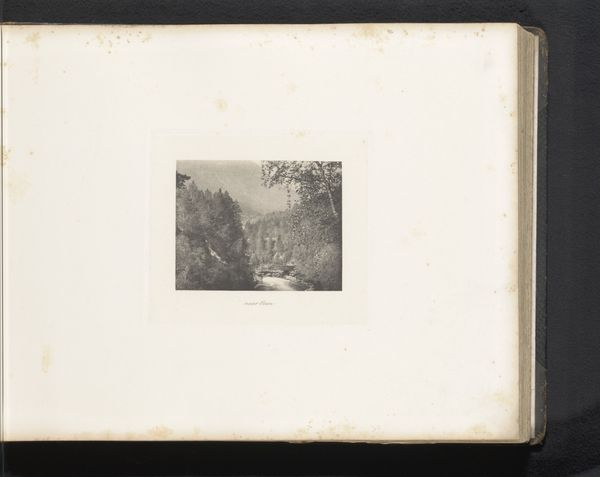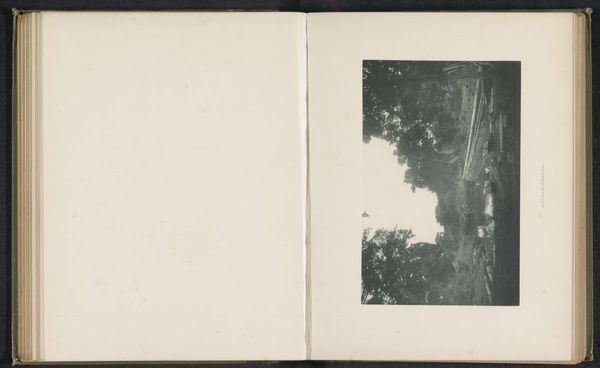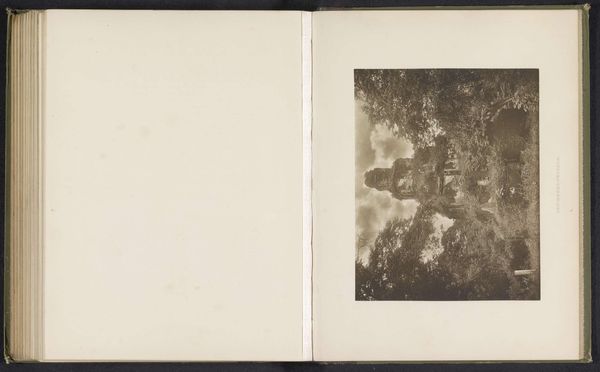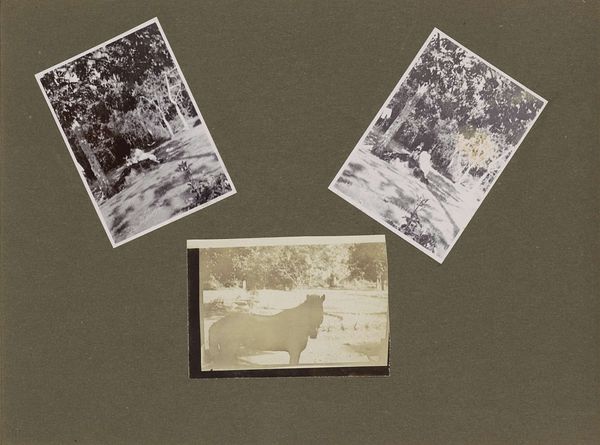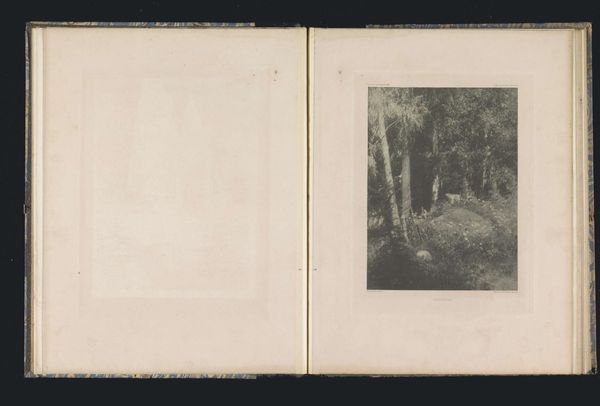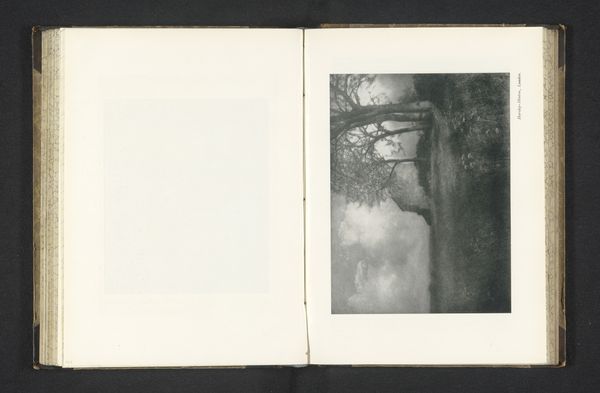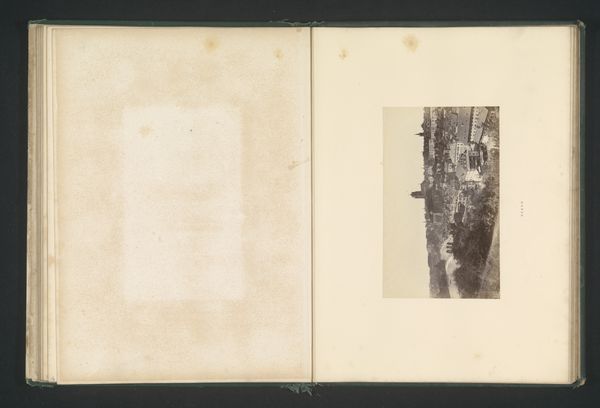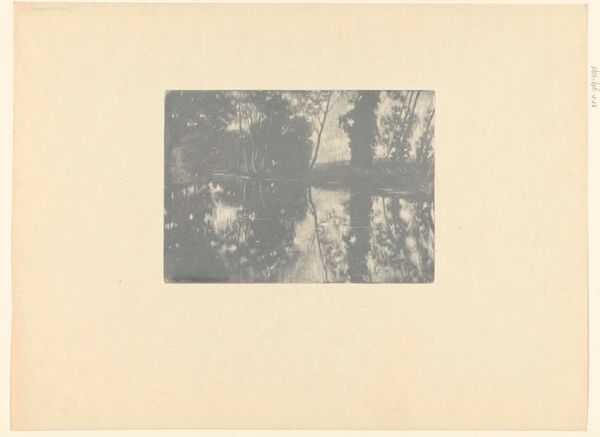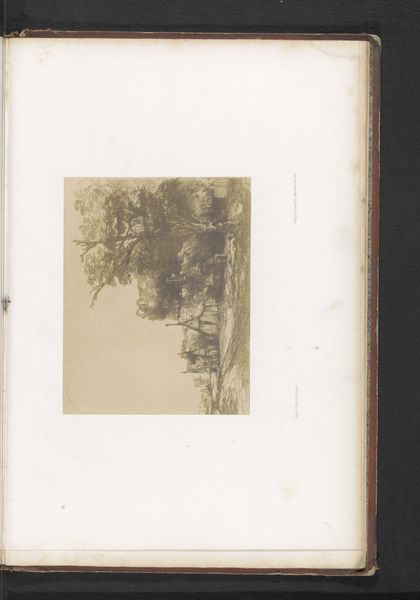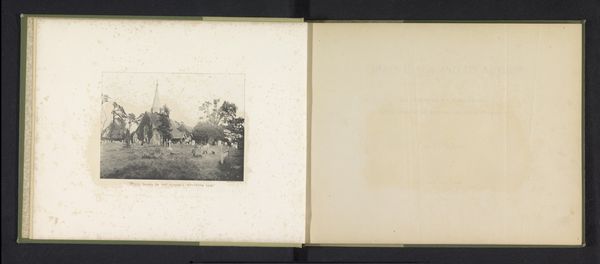
photography
#
portrait
#
pictorialism
#
landscape
#
photography
#
group-portraits
Dimensions: height 86 mm, width 128 mm, height 189 mm, width 247 mm
Copyright: Rijks Museum: Open Domain
Curator: Welcome! Here we have Willem Witsen's photograph, "Kloos, Boeken en Hofker," created sometime between 1860 and 1915. It's a compelling example of Pictorialist photography, a group portrait set within a landscape, and is now part of the Rijksmuseum collection. Editor: It has such a hazy, dreamy quality, doesn't it? Like peering into a forgotten memory. The tones are so soft and sepia-toned; I can almost smell the damp earth and overgrown greenery. Curator: Precisely! That's Pictorialism for you. Witsen and his contemporaries aimed to elevate photography to the level of fine art, employing techniques like soft focus and specific printing processes to achieve painterly effects. Notice how the figures blend seamlessly into the natural setting. Editor: They almost look like apparitions! Are we sure it’s even real? And what exactly is it they’re doing in the frame; it’s sort of comical that one of the figures appears to be doing the tango in the backyard. Is that what gentlemen did in the past; did they garden and perform tango lessons for one another? Curator: Ah, I don't believe they’re quite dancing. Likely it was an unplanned motion during the long exposure time which might lend some insight into societal constraints during that historical moment. Social status might dictate the degree to which the body could perform actions within specific settings. It's a photograph about the artistic and literary circles of the time. It serves as a documentation and also romanticized ideal of the intimacy that came from the comradery. Editor: Yes I can feel it; as I study it I now appreciate that it is an intimate and unique look into a bygone era; it offers more than just an historical record. It also sparks a kind of visual poetry; this feeling like anything can and will transform right before your eyes… a dance for life. Curator: Indeed. The composition subtly suggests that sense of transformation that permeates this era. This photographic capture offers insights into art, society, and the role of these key figures who left indelible marks on that time, and continue to fascinate us to this very day. Editor: I completely agree. This visit certainly encouraged me to reimagine the still photography form into some sort of dancing scene and perhaps I should add it to my own artist tool box, something very danceable, something very historical.
Comments
No comments
Be the first to comment and join the conversation on the ultimate creative platform.
